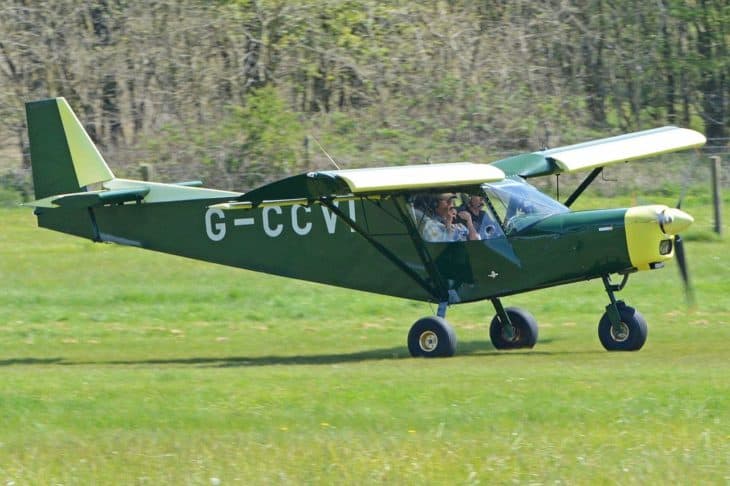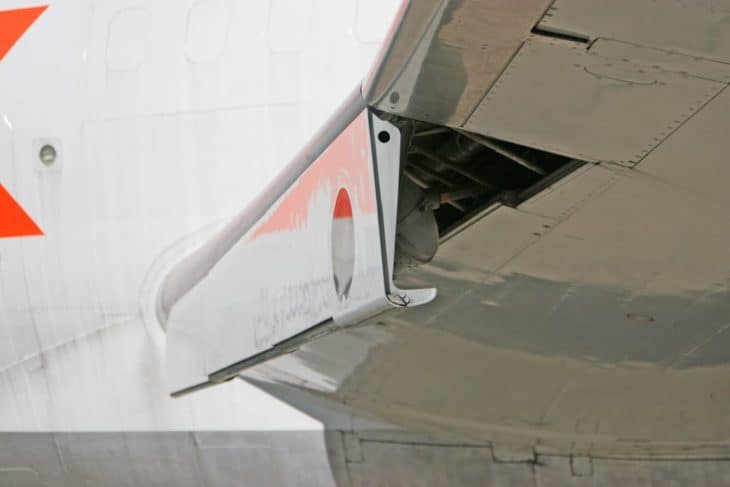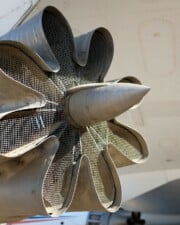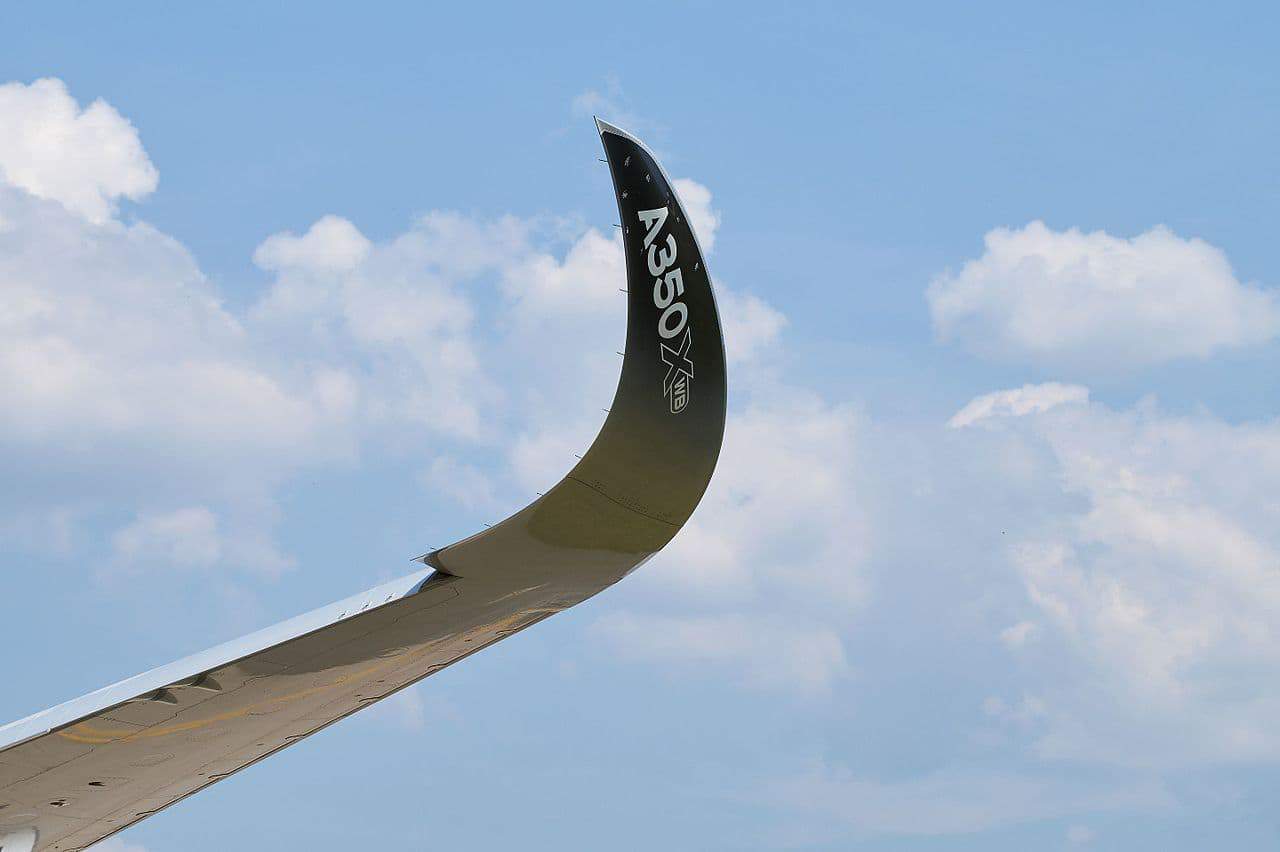In the hundred-plus years that designers have been perfecting airplanes, they’ve come up with quite a few creative ways to squeeze more lift out of a wing. While that’s helpful to get the plane off the ground, it’s critical to make a plane easy to control during flight phases. High-speed planes like airliners and fighter jets need to make more lift when they need to fly slowly as they do for landing.
TL;DR – What Are Slats?
Slats are a form of high-lift device, just like trailing-edge flaps. They alter the shape of an airplane’s wing to help it produce more lift at low airspeeds. Slats are found on the wing’s leading edge, and they move forward to increase the camber of the wing. They are sometimes called leading-edge flaps, of which they are just one example.
The Purpose of Flaps
Airplanes use flaps to help control the amount of lift that an airplane wing makes. Deploying flaps makes more lift, so a wing designed to fly at very high speeds can also fly at lower speeds if they use flaps. Flaps are one category of flight control known as a high-lift device.
All flaps are deployed by the pilot incrementally, depending on the speeds they wish to fly. A typical flight profile includes some flaps used during takeoff, no flaps used while en route at high speeds, some flaps used during steep descents, and full flaps extended for landing.

Using partial flaps for takeoff means lifting off the ground sooner without adding too much drag. Using full flaps for landing means that the airplane can touchdown at the slowest possible speed, reducing the runway it needs to stop and the wear and tear on its tires and brakes.
Flaps come in a variety of shapes and sizes to suit different aircraft designs. Some planes, like slow-moving trainers, have no flaps at all. Since the difference between their landing speed and their cruising speed is not very much, there’s no reason to add complexity to their design and operation.
Most light aircraft have simple trailing-edge flaps. They come in several basic designs, but they generally are a small portion of the inboard wing that moves downward.
As aircraft get more advanced, so do their flap systems. Transport aircraft often have several sets of trailing edge flaps, as well as leading-edge slats and slots.
What are Slats and How do Slats Work
Slats are basically flaps but on the front of the wing. In planes with slats, the wing’s forward edge moves forward and down, increasing the camber of the wing dramatically. The camber is the curve that the upper part of the wing makes.
Slats themselves are curved since they make up the leading edge of the wing during normal flight. So when they are extended, the curve of the wing increases dramatically.

The camber of the wing plays a significant factor in how much lift it makes. The greater the camber is, the more significant the difference between the pressures above and below the wing. That means more lift, especially at lower speeds.
Most slats you see are electrically operated by a control in the cockpit. They are sometimes tied into the main flap controls so that the designers can pre-program the most efficient flight profiles for the airplane.
Some slats are aerodynamically activated. When the relative wind begins hitting the bottom of the wing during high angles of attack, it forces the hinged slat to move forward and extend. When the angle of attack is reduced, the flattened relative wind pushes the slat back into its retracted position. This system is known as a Handley-Page slat.
Slats Versus Slots
While moveable slats are found on large transport aircraft, slots are more common on smaller planes.
A slot is a permanent opening in the front of the wing, so the relative wind has two possible paths to follow. During high-speed flight, with the nose level, the wind flows over the wing normally. A slot wouldn’t exist without a fixed slat in front of it.
During low-speed flight, with the nose high at high angles of attack, air can also flow through the slot. This creates two wings, in effect. Air flows over the outer slat, but it also flows through the slot and over the main wing. This double airflow allows the wing to produce a lot of lift in either scenario, but it’s low-speed characteristics are exceptional.
Slots are commonly used on STOL (short takeoff and landing) or VSTOL (very short takeoff and landing) airplanes. These planes use every aerodynamic trick possible to squeeze lift out of a wing, and the results are impressive. Many times, these planes can lift off and touch down at twenty knots or less! And that means they need very little runway.

STOL aircraft are used for bush flying. When off-airport, having short takeoff and landing capabilities means that any field will do. The smaller the clearing necessary, the more choices the pilot has of places to go.
In some planes, a slot is formed when the moveable slats are extended. But most of the time, this isn’t enough to truly function like a slot does, but it might add a little lift.
Fixed slots aren’t common outside of relatively low-performance STOL aircraft since the slot itself introduces a lot of drag to the design. In short, it is very effective at low speeds, but its usefulness quickly diminishes for higher speed aircraft.
Leading-Edge Flaps vs Slats
A leading-edge flap is a generic term for any moveable high-lift device on the front edge of the wing. If non-moveable devices like slots are included, these items are known as “leading-edge devices.”
Krueger flaps are sometimes referred to as “leading-edge flaps” since their design is similar to a plain flap. It has a hinged flap that extends downward from the underside of the wing. It’s a flat piece of metal that pivots down and forward from the leading edge. It increases the camber of the wing, just like a slat does. But the shape is less efficient.
Krueger flaps aren’t very common any more, and it was a precursor to the slat design. Today, they can still be found on many Boeing aircraft between the fuselage and the first engine nacelle. Outboard of the engine, slats are used. Early Boeings used Krueger flaps exclusively.

Other Leading-Edge Devices Similar to Slats
Cuffs
Cuffs are a fixed protrusion on the leading edge of a wing that looks like a slat. It functions like a slat too, but it’s always there. Some aircraft, like the Cirrus single-engine planes, use cuffs to control the stall speed along their wings. By adding cuffs to the wings’ outboard ends, the root stalls first, allowing the pilot to maintain better control during stalls and low-speed flight.
Droop flaps
Droop flaps are very similar to slats. But instead of small panels on the wing moving forward (as is the case with slats), the entire leading edge of the wing “droops” downward.
Vortex generators (VGs)
Vortex generators (VGs) are small points of metal arranged along the upper edge of the wing. They are designed to produce laminar flow, which occurs when the air flowing over the wing remains flowing smoothly. When the flow separates, it causes extra drag. The addition of vortex generators allows for more efficient operation of the wing. VGs can be used not only on the wings but on the fuselage and control surfaces. They are even used on the blades of wind turbines to make them quieter and more efficient.
Related Posts















